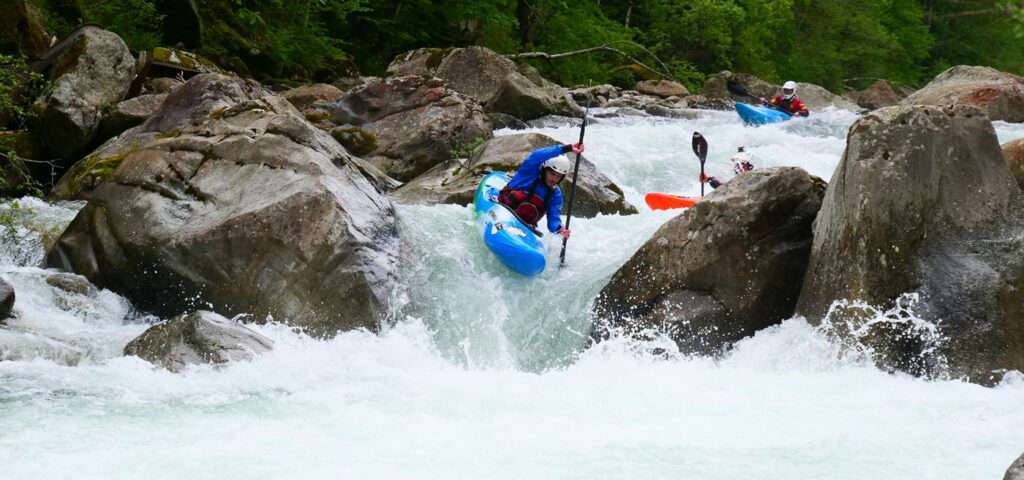Paddlers have a wide variety of choices to employ in their arsenal of paddle strokes. There’s the forward stroke, the draw stroke, and the j-stroke to name just a few. One thing all of these strokes have in common is their anatomy. That’s right. No matter what paddle stroke you use in a canoe or kayak, they all have the same parts.
The anatomy of every paddle stroke consists of three phases. First there’s the catch phase which is followed by the power phase and then by the recovery phase. While each type of stroke may require the kayaker or canoeist to vary a part of one or all of these phases, the phases still exist. Let’s take a look at each phase of a paddle stroke.
The Anatomy of a Paddle Stroke
1. Catch Phase of a Paddle Stroke
Definition: The catch phase is one of three parts to a paddle stroke which include the catch phase, the power phase, and the recovery phase. The catch phase is the part of the stroke that describes when the paddle enters the water.
Also Known As: the catch
Examples: During the catch phase the paddle should enter the water with little to no disturbance.
2. Power Phase
Definition: The power phase is one of three parts to a paddle stroke which include the catch phase, the power phase, and the recovery phase. The power phase is the part of the stroke that actually pulls the canoe or kayak through the water.
Also Known As: the propulsion phase
Examples: Keep the paddle moving smoothly through the power phase of the stroke.
3. The Recovery Phase
Definition: The recovery phase is one of three parts to a paddle stroke which include the catch phase, the power phase, and the recovery phase. The recovery phase is the part of the stroke where the paddle leaves the water after one stroke and begins to setup for the next paddle stroke.
Also Known As: the recovery
Examples: Maintaining proper form during the recovery phase will help reduce paddle fatigue.
Knowing these three phases of a paddle stroke will help you learn the various different strokes by breaking them down into their respective parts.

